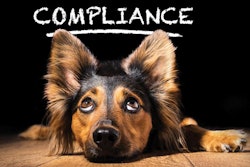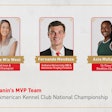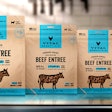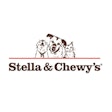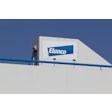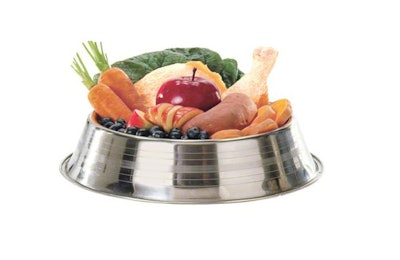
Pet food brands in the popular human grade space likely reap many rewards from loyal consumers, but may have encountered some obstacles in reaching marketplace success. For brands considering entering the human grade category, it pays to be aware of the most common challenges and how to avoid or overcome potential stumbling blocks.
Those can include increased costs, limited supplies of certain ingredients, decreased palatability, dramatically increased paperwork, manufacturing challenges, export issues and regulatory complexity, said Carolyn Kennedy of EAS Consulting Group during a presentation at the American Feed Industry Association’s 2022 Pet Food Conference, held January 25 at the International Production and Processing Expo in Atlanta, Georgia, USA.
Human grade pet food labeling full of pitfalls
Kennedy also stressed the benefits of developing human grade products, which she characterized as an extension of the pet food market’s ongoing premiumization trend. As some pet owners seek pet foods closer to what they eat themselves, human grade can lead to market success and increased sales. But first, a manufacturer must overcome some of the challenges to hit the market with products that are palatable to both the pet and the owner’s wallet, while also ensuring a profit for the company.
That means factoring in the higher costs of ensuring stable supplies of ingredients, possibly changing processing parameters, completing all necessary documentation and complying with labeling and other regulations.
“Human grade is an all or nothing statement, there’s no middle ground,” Kennedy said, referring to product labeling. Most state regulators require an affidavit letter certifying everything in the food is human grade, plus another affidavit covering certain aspects of transportation, storage and warehousing of human grade products.
“Labeling is full of pitfalls,” Kennedy added. Besides following all rules spelled out in Association of American Feed Control Officials (AAFCO) guidelines, such as intended use of the product, a brand has to place the statement of intended use right next to the first usage of the “human grade” claim, taking care that the text used for the claim is not larger than the intended use statement. The label must include a “not for human consumption” statement; at the same time, you have to avoid including statements of grade or quality in the ingredients list.
AAFCO update on human grade pet food guidelines
During another presentation, George Ferguson, feed administrator for the North Carolina Department of Agriculture and president of AAFCO, provide an update on the organization’s human grade pet food guidelines. At the AAFCO mid-year meeting January 18-20, 2022, the Pet Food Committee presented revisions, Ferguson said; he expects a vote on them by the full AAFCO membership at its annual meeting in August.
The revised guidelines created a path for products manufactured and final-packed in non-Food-and-Drug Administration-certified facilities (i.e., Food Safety and Inspection Service facilities) to meet the human grade requirements, Ferguson explained. To certify this, the guidelines also set a course for a third-party audit through the U.S. Department of Agriculture Marketing Service’s (AMS) process-verified program.
In addition, Ferguson said, AAFCO is considering a model affidavit or scaled document submission for human grade pet foods, will establish an FAQ page on its website dedicated to these label claims, will create a library to house example or model documents, refresh membership of the human grade work group as AAFCO considers the AMS audit standards and establish a human grade FAQ work group.
Still opportunities to grow human grade category
Looking at the future for human grade pet foods, Kennedy said she could envision an external regulatory mechanism and documentation, perhaps similar to AAFCO’s AMS audit proposal or to the requirements under the National Organic Program, to relieve state regulators of having to verify all human grade labels and documents.
Despite the challenges in developing and marketing human grade pet foods, Kennedy believes the category still has opportunities to expand import and export possibilities and increase buying choices for consumers, including cat owners or owners seeking to feed at-home human grade pet food mixes.





